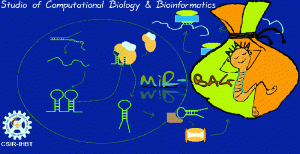Status:
Platform:
Non-coding elements such as miRNAs play key regulatory roles in living systems. These ultra-short, ~21 bp long, RNA molecules are derived from their hairpin precursors and usually participate in negative gene regulation by binding the target mRNAs. Discovering miRNA candidate regions across the genome has been a challenging problem. Most of the existing tools work reliably only for limited datasets. Here, we have presented a novel reliable approach, miR-BAG, developed to identify miRNA candidate regions in genomes by scanning sequences as well as by using next generation sequencing (NGS) data. miR-BAG utilizes a bootstrap aggregation based machine learning approach, successfully creating an ensemble of complementary learners to attain high accuracy while balancing sensitivity and specificity. miR-BAG was developed for wide range of species and tested extensively for performance over a wide range of experimentally validated data. Consideration of position-specific variation of triplet structural profiles and mature miRNA anchored structural profiles had a positive impact on performance. miR-BAG's performance was found consistent and the accuracy level was observed to be >90% for most of the species considered in the present study. In a detailed comparative analysis, miR-BAG performed better than six existing tools. Using miR-BAG NGS module, we identified a total of 22 novel miRNA candidate regions in cow genome in addition to a total of 42 cow specific miRNA regions. In practice, discovery of miRNA regions in a genome demands high-throughput data analysis, requiring large amount of processing. Considering this, miR-BAG has been developed in multi-threaded parallel architecture as a web server as well as a user friendly GUI standalone version.[1]









